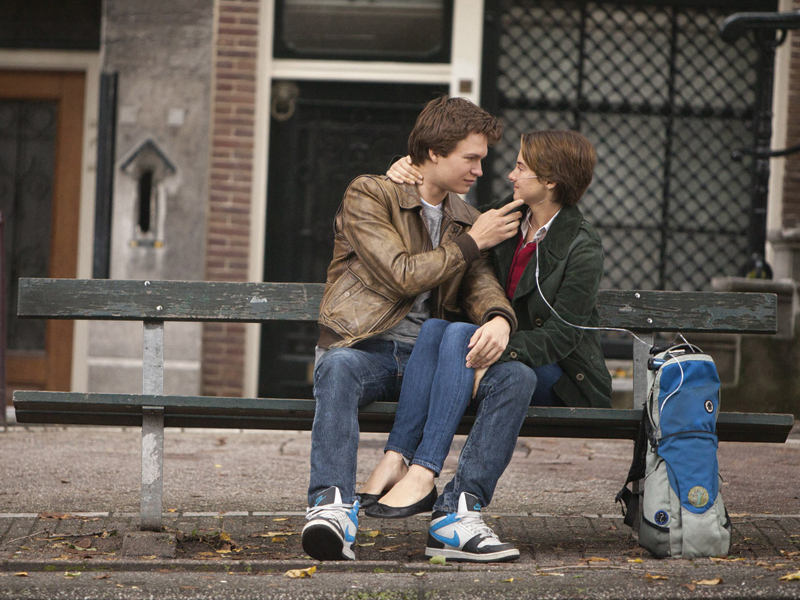
When I walked out of “The Fault in our Stars,” my thoughts were stars I couldn’t fathom into constellations. Just kidding. I was bawling too hard to make smarmy allusions to the best-selling novel by John Green this movie is based on. Actually, pretty much everyone in the theater seemed to be openly weeping.
The movie’s premise is not original — a smart, funny teenage girl falls in love with a smart, funny teenage boy. Plot twist: they both have cancer. Hazel Grace (Shailene Woodley) is the cuttingly self-aware protagonist who narrates the movie, keeping the literary aspect to the story. Her love interest, Augustus Waters (Ansel Elgort) is the ideal young adult genre love interest: He’s attractive, wise and blatantly, conveniently in love with the protagonist.
Together, the two poke fun at their cancer narratives. They visit Amsterdam, which in the film is rendered beautifully and suffused with canals, champagne and charming waiters. They egg a nasty girl’s house in revenge for breaking their friend Isaac’s heart. But though the film emphasizes that these kids are more than their disease, their disease also permeates every aspect of the movie. Hazel keeps her oxygen tank with her throughout the movie. Augustus has a prosthetic leg which he displays with an affected nonchalance.
If you have an Internet connection (and I hope you do), you are probably already a little familiar with this story. This movie is the newest teen craze — it took in $48.2 million in its opening weekend. However, “The Fault in our Stars” is not picking up the dubious tradition of cliche teen romance left by other book-to-movie adaptations, like “Twilight.”
Instead, this movie is disarmingly honest. This is a love story — but it’s also about dying and the family members of people with cancer. As Hazel so eloquently puts it, “There’s only one thing in this world shittier than biting it from cancer, and that’s having a kid who bites it from cancer.” There’s a strong focus on the kids’ parents and the movie is better and more realistic for it.
However, the movie does fall victim to the tropes of the romantic comedy genre. Though “The Fault in our Stars” aims for originality, the dialogue is sometimes sugary sweet and cringey. Characters yell and affirm their love for one another constantly. There’s schmaltzy music that swells up whenever the two protagonists kiss. And of course, like every teen movie since John Hughes, the main character Hazel proclaims that her life is nothing like a teen movie.
But she’s surprisingly right. This movie does not end happily but it does require the audience to suspend their sense of cynicism. “Gus, my love, I cannot tell you how thankful I am for our little infinity,” Hazel says at one point in the film. It’s a pretentious and unabashedly gushy line but this movie is a hundred percent filled with unrelenting emotion, whether happy or tragic. “The Fault in our Stars” doesn’t roll its eyes and it doesn’t let you smirk. Instead, it compels you to feel everything unironically and to empathize with the characters as they struggle to make use of their limited time. When Hazel says that line, you’re right there, nodding and sobbing along with her grief.
This brings me back to what I will lovingly call the “cryfest” in the theater. No one was ashamed that they were crying so hard at a cutesy movie. They seemed to go with it matter-of-factly.
“I just cried straight through the whole movie,” said Mary Martinez, a fellow movie attendee proudly, as if it were only the decent thing to do. And in some ways, it was.
I recommend “The Fault in Our Stars” as an intense movie-going experience if you’re willing to put in the effort and engage emotionally with the characters. Don’t watch it alone, though. If you rent it, make sure you’re accompanied by at least a very large tub of ice cream. You will cry. It’s okay — you kind of have to.
Rating: 4 stars








